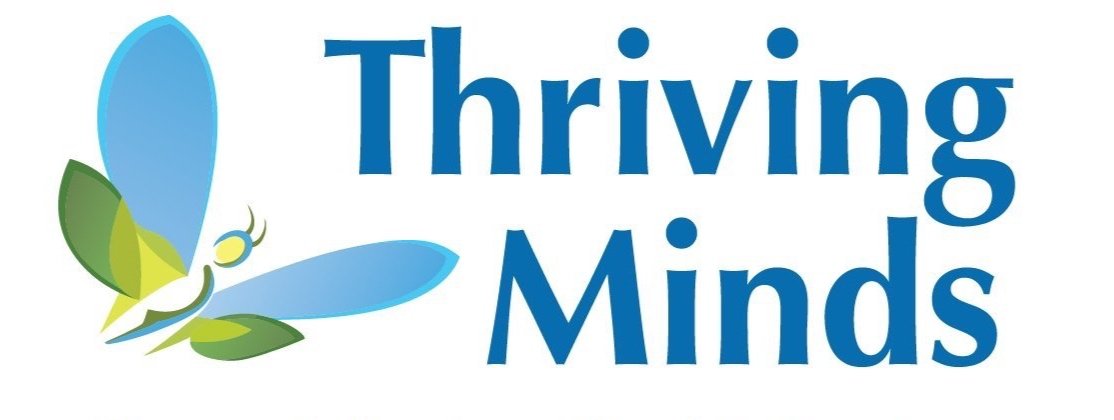When supporting children with Selective Mutism (SM), parents and educators play an integral role in treatment—from creating the right opportunities for bravery, responding to the child in times of anxiety, and providing encouragement to reach their goals. Just as every child’s voice is shaped not only by their personality and experiences but also by their familial and cultural background; so too are parents’ and educators’ interactions shaped by the same variables.
Read MoreWhen supporting children with Selective Mutism (SM), parents and educators play an integral role in treatment—from creating the right opportunities for bravery, responding to the child in times of anxiety, and providing encouragement to reach their goals. Just as every child’s voice is shaped not only by their personality and experiences but also by their familial and cultural background; so too are parents’ and educators’ interactions shaped by the same variables.
Read MoreWhen supporting children with Selective Mutism (SM), parents and educators play an integral role in treatment—from creating the right opportunities for bravery, responding to the child in times of anxiety, and providing encouragement to reach their goals. Just as every child’s voice is shaped not only by their personality and experiences but also by their familial and cultural background; so too are parents’ and educators’ interactions shaped by the same variables.
Read MoreWhen supporting children with Selective Mutism (SM), parents and educators play an integral role in treatment—from creating the right opportunities for bravery, responding to the child in times of anxiety, and providing encouragement to reach their goals. Just as every child’s voice is shaped not only by their personality and experiences but also by their familial and cultural background; so too are parents’ and educators’ interactions shaped by the same variables.
Read MoreWhen supporting children with Selective Mutism (SM), parents and educators play an integral role in treatment—from creating the right opportunities for bravery, responding to the child in times of anxiety, and providing encouragement to reach their goals. Just as every child’s voice is shaped not only by their personality and experiences but also by their familial and cultural background; so too are parents’ and educators’ interactions shaped by the same variables.
Read MoreTreatment for selective mutism is a multimodal, all-hands-on-deck experience, with significant input from clinicians, teachers, peers, family, community members, and — most importantly — parents. Given parents’ critical role in fostering bravery and promoting speech across environments, it is helpful to consider what support parents may require in order for them, in turn, to best support their children. A recent international study did just that, identifying five broad categories of common issues faced and four broad categories of support needs identified by 70 parents of children with SM (Yamanaka et al., 2024). This article reviews those findings, discussing how parent support networks can contribute to addressing those issues and meeting those needs.
Read MoreA diagnosis of selective mutism can provide a lot of clarity for children and their parents, explaining why it is difficult for kids to speak in certain environments and how the cycle of anxiety and accommodation can cause symptoms to worsen. However, once it’s clear that the speech avoidance is not due to an extreme case of shyness or stubbornness, you may wonder what to do next. This article explains how to create an exposure ladder in order to support your child in taking incremental steps toward finding their brave voice.
Read MoreImmediate family members are usually the most comfortable speaking partners for children with selective mutism. In fact, many parents of kids with SM describe their children as outgoing, talkative, friendly, and even loud when they are at home. This makes it that much more difficult to watch these kids struggle to interact with extended family, friends, and community members. Often, family members will try to bridge the gap for their loved one in order to facilitate communication with other people. This article will discuss common behaviors and identify helpful practices for family members to employ to promote brave speech long term.
Read MoreIf a child is receiving recurring therapy for selective mutism, that therapy likely only occurs for 1 hour per week, which pales in comparison to the 30-35 hours they spend at school with teachers and staff. However, teachers are tasked with attending to the demands of entire classes of up to 25-30 students, so it can be difficult to figure out how to address the needs of one kid — especially if that kid completes their work and poses no disruption to general instruction. At the same time, we know that selective mutism can have negative impacts on educational, behavioral, social and emotional functioning, so it is important for teachers and staff to have the tools to support those students in school. This article provides helpful steps for incorporating the most commonly used behavioral intervention found in SM treatment studies — contingency management systems — into the school setting.
Read MoreThere are several modalities of treatment available to support kids with selective mutism in finding their brave voice and thriving at home, in school, and in their communities. Among these, intensives have emerged as an excellent way to help kids make big gains in a short period of time, which is valuable at any stage of their journey. This article provides parents with an overview of recent empirical research published about intensive group behavioral treatment (IGBT) in the form of summer camps for selective mutism, as well as insight into the camps offered by Thriving Minds.
Read MoreWith the holiday season well underway, the next few weeks are often full of festivities and events at kids’ schools, in the community, and with extended family. These unstructured social events can pose a particular challenge for individuals with selective mutism due to the disruption to usual routines, exposure to unfamiliar people, and unclear speech demands. This article offers parents recommendations for making the holiday season less intimidating — and potentially even more rewarding — for their children with selective mutism.
Read MoreIn the early stages of selective mutism treatment, children are often working on establishing foundational brave speaking skills. This might include practicing things such as responding to unfamiliar people, growing single-word responses to short sentences, and speaking in new environments and situations.
Once children make progress on these goals and start using their brave voice more consistently, caregivers and educators often ask us, what next? While making these initial gains is monumental and definitely worth celebration, it’s also important to continuously adjust goals to further challenge our children so they can reach their full potential.
Read MoreWhen families first hear about our intensive therapy programs, they often ask, “What does a typical day look like?” The truth is, no two intensives are exactly the same—each one is shaped by the unique needs and goals of the child. But we can offer you a behind-the-scenes look into two different intensives to give you a better sense of how these programs unfold and how they help children make meaningful progress in a short amount of time.
Read MoreAs fall quickly approaches, parents often begin to worry about their child’s or teen’s ability to reintegrate back into the school environment. Returning from breaks from school can be especially difficult for individuals with selective mutism, given the changes in consistency that come with not attending school for a significant period of time. This article offers recommendations for parents of children with selective mutism in regard to creating a greater likelihood of having a successful return to school after summer break.
Read MoreWhen considering how to change a child’s current behavior and speaking patterns, it can be challenging to know where to start. The following article offers recommendations regarding where to begin treatment as well as important considerations as a child progresses through treatment.
Read MoreThe terms “shaping” and “fading” are commonly used in describing treatment approaches for selective mutism. But what are these terms all about? The following article explores the how and why of shaping and fading to provide insight into the treatment process for selective mutism.
Read MoreSelective mutism is an anxiety disorder, meaning that the act of not speaking in certain situations is driven by fear. However, it is not uncommon for individuals with a specific anxiety disorder such as selective mutism to also present with other heightened fears or anxiety disorders. This article examines how the approach to treating selective mutism, which is rooted in principles of exposure therapy, can be extended to other anxieties and areas of avoidance that a child may be experiencing.
Read MoreSelective mutism can present in younger children as well as older children and teenagers. Though treatment approaches and underlying principles are similar despite age, there are several modifications and additions that can be made in the treatment of teens that may yield a greater likelihood for positive outcomes. This article further explores those differences to provide clarity regarding treating selective mutism in teens.
Read MoreFour categories represent the functions of behavior, which provide insight as to why a child may be acting in a certain manner. These functions are: tangibles (attempts to gain an item or privilege), attention (attempts to gain interaction, be it positive or negative, from others), escape (attempts to avoid a feared stimulus), and sensory (attempts to gain physical stimulation or soothing). This article explores the functions of behavior and how they impact the presentation and treatment of children with selective mutism.
Read MoreAlthough a consensus has yet to be solidified in the research regarding the precise relationship between selective mutism and social anxiety, it is highly common for children and adolescents with selective mutism to also receive a social phobia diagnosis. Fortunately, regardless of whether a child meets criteria for both diagnoses or one, evidence-based treatment for these disorders is relatively similar and rooted in cognitive-behavioral principles. This article explores the interplay between social anxiety and selective mutism and differentiates shyness and typical expressions of anxiety from psychopathology.
Read More




















